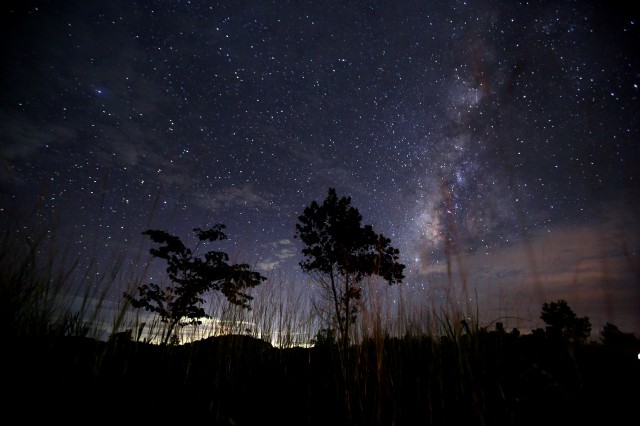However, given that the meteor shower could be, as Burress put it, a "complete dud," he suggested driving no more than a half-hour to check it out. As a rule of thumb, he said, people should look for dark skies with a clear view of the northern horizon.
The meteor shower is tentatively named after the constellation it will be flying out of, which is close to the North Star and translates into "camel leopard" or "giraffe-like creature." So far, according to NASA's website, there isn't even agreement on how to pronounce the shower. Is the accent on the PAR or the MEL or the DAL? Depends on whom you ask.
As NASA explains it, Earth will travel through debris that was ejected from a comet in the 18th, 19th and 20th centuries. A meteor shower will be the byproduct, provided that this comet, named 209P/LINEAR, was actively producing lots of dust. It will be slow, in terms of meteor speed, but will still be moving at 36,000 mph.
"It goes around the sun every five years," Burress said, who added that astronomers are interested in keeping an eye on this comet because it crosses Earth's orbit. A fairly recent shift in the comet's orbit has moved the dust stream into Earth's path.
"In the past we never passed through it, even though it was there in space," Burress said. "Since we've never seen this shower before, we really don't know what's going to happen. There have been a lot of predictions about meteor storms, where you see 200 or 300 meteors per hour."
Others have said it could flame out as badly as a Philadelphia sports team. "But the consensus is that people are hopeful this could be a nice, showy shower," Burress said.
This map from NASA might be helpful. The forecast is for clear skies. But if the weather is crummy or you're paralyzed by sloth and inertia, you can watch NASA's live stream, which is scheduled to begin at 6:30 p.m. Pacific Daylight Time. There will also be a live chat on the NASA website 8-11 p.m. PDT.
NASA, not surprisingly, has posted a lot of information about the showers, and says that "North America has a pretty good seat for this cosmic event." It also noted that, "Any data we collect about the May Camelopardalids this year will shed some light (no pun intended) on how much dust 209P produced in the past. So even no data is good data, as they say."
The point-of-origin constellation is not well known, NASA said, but it's roughly between Ursa Major and Cassiopeia.
Here's one of the questions in the FAQ put out by NASA:
Q: My skies are dark and cloud-free but I’m still not seeing any meteors! Why not?!
A: There are a couple of possibilities. (1) The comet wasn’t very active 200+ years ago, and therefore didn’t produce many meteoroids. So the meteor shower is much weaker than predicted. (2) You need to have patience. You also need to make sure your eyes are adapted to the dark – this takes about 45 minutes. Make sure you don’t keep looking at your phone or other sources of light, else your eyes will have to start the dark adaptation process all over again.
If tonight's meteor shower doesn't wimp out, it could join the ranks of the Gemenids, Leonids and Perseids, Burress said.
"The Old Faithfuls are pretty predictable," Burress said. "And hopefully this will become an Old Faithful in the future."
